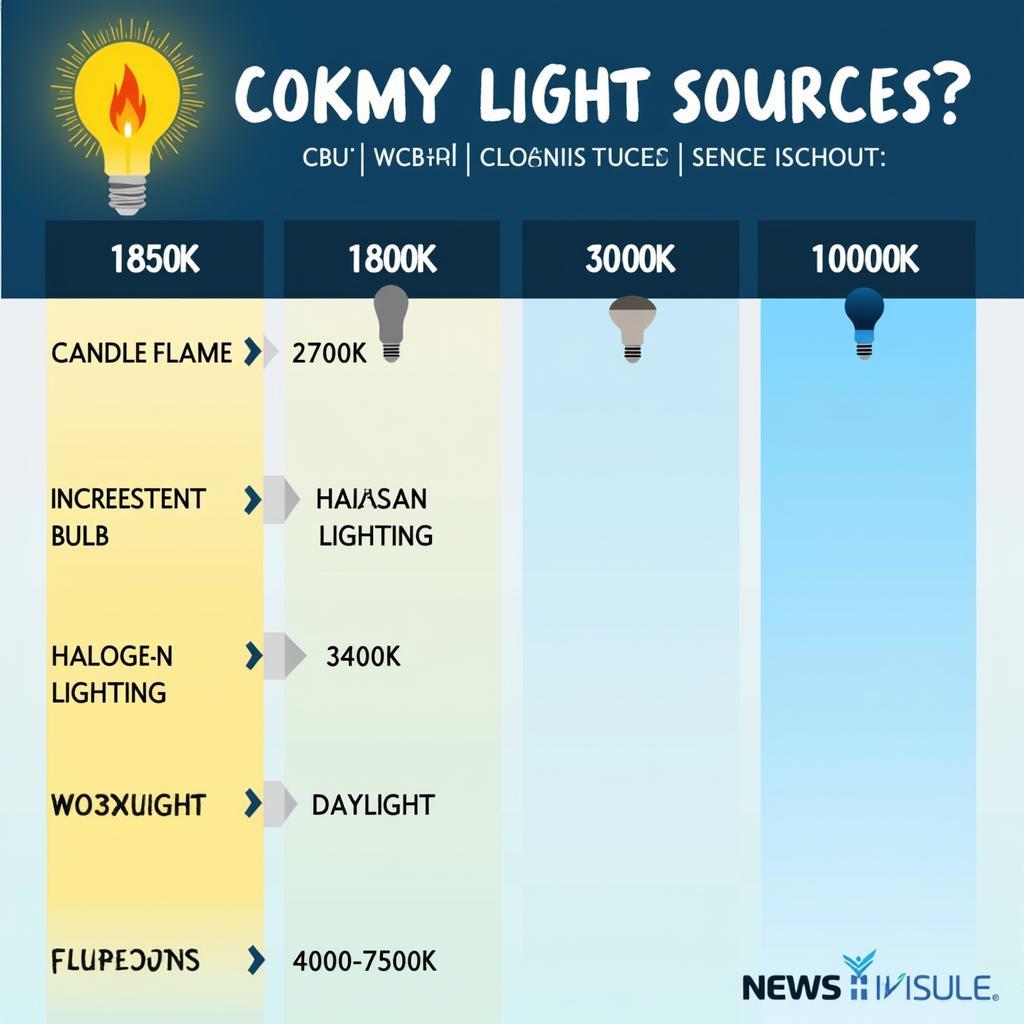Understanding color temperature is crucial for creating the perfect ambiance in your home. Whether you’re choosing paint colors, light bulbs, or even furniture, knowing how to measure and manipulate color temperature can drastically impact the mood and feel of a space. This article will delve into the fascinating world of color temperature, exploring how it’s measured and how you can use this knowledge to transform your living environment. Let’s illuminate the secrets of color temperature together!
Color temperature is measured in Kelvins (K), a unit of absolute temperature. Lower Kelvin values (around 2700K) correspond to warmer colors like orange and red, reminiscent of a cozy fireplace. As the Kelvin value increases, the color shifts towards yellow, white, and eventually blue at the higher end of the spectrum (around 6500K and above), evoking the coolness of a clear sky. This scale provides a standardized way to quantify and communicate about the color of light.
Understanding the Kelvin Scale
The Kelvin scale is the cornerstone of measuring color temperature. It’s an absolute scale, meaning it starts at absolute zero (0K), the theoretical point where all molecular motion ceases. For practical purposes in lighting and design, we focus on the range from around 1000K to 10000K. This range encompasses the color temperatures we encounter in everyday life, from the warm glow of candlelight to the crisp blue of a winter sky. Are you curious about the science behind how colors affect our mood? Check out this resource on what do colors on mood rings mean.
What does a higher Kelvin value mean?
A higher Kelvin value indicates a cooler, bluer light. Think of the bright white light of a hospital operating room, which typically has a color temperature around 4000K-5000K. These cooler temperatures are often associated with alertness and focus.
What does a lower Kelvin value mean?
Conversely, a lower Kelvin value signifies a warmer, more reddish or yellowish light. Imagine the inviting ambiance of a restaurant lit with incandescent bulbs, which typically have a color temperature around 2700K. These warmer temperatures are often associated with relaxation and comfort.
 Different Light Sources and their Kelvin Values
Different Light Sources and their Kelvin Values
How to Choose the Right Color Temperature
Choosing the right color temperature is essential for setting the desired mood in a room. In areas where relaxation is key, such as bedrooms and living rooms, warmer color temperatures (2700K-3000K) are ideal. For task-oriented spaces like kitchens and bathrooms, cooler temperatures (3500K-4100K) promote alertness and visibility. Certain fabrics also react differently to dyes, you might find this article helpful: how to color nylon fabric.
Measuring Color Temperature with a Color Temperature Meter
While you can often estimate color temperature based on the type of light source, for precise measurements, you’ll need a color temperature meter. These devices measure the spectral power distribution of light and provide a reading in Kelvins. They’re particularly useful for professionals in photography, filmmaking, and lighting design, ensuring accurate color reproduction.
“Understanding color temperature is like having a secret weapon in your design arsenal. It allows you to manipulate the mood and feel of a space with precision,” says renowned lighting designer, Anya Sharma. “By mastering the Kelvin scale, you can transform any environment into a haven of comfort or a hub of productivity.”
Conclusion
Mastering color temperature measurement empowers you to create spaces that truly reflect your vision. By understanding the Kelvin scale and utilizing the right tools, you can transform your home into a harmonious blend of light and color. Remember, choosing the right color temperature is not merely about aesthetics; it’s about enhancing your well-being and creating a space that feels truly yours. If you’re dealing with pesky ticks in your garden, knowing what color attracts ticks might be helpful. Understanding color is more than just aesthetics!
FAQ
-
What is the ideal color temperature for a living room? Warm temperatures between 2700K and 3000K are generally recommended.
-
Do all light bulbs have a color temperature rating? Most modern light bulbs list their color temperature in Kelvins on the packaging.
-
Can color temperature affect my sleep? Yes, exposure to blue light (higher Kelvin values) can suppress melatonin production, making it harder to fall asleep.
-
How can I change the color temperature of my existing lights? You can use colored light bulbs or color-changing smart bulbs to adjust the color temperature.
-
What is the color temperature of natural daylight? Natural daylight varies throughout the day but generally falls between 5000K and 6500K.
-
Is a higher Kelvin value always better? Not necessarily. The best color temperature depends on the intended use of the space and the desired mood.
-
Where can I buy a color temperature meter? Color temperature meters are available online and at specialty photography or lighting stores.
Did you know the color of a black box on a plane isn’t black at all? Learn more about it here: de que color es la caja negra de un avion. You might also be interested in is there ragweed in colorado.
Need assistance with color selection or home design? Contact us! Phone: 0373298888, Email: [email protected], Address: 86 Cau Giay, Hanoi. We have a 24/7 customer service team ready to help.